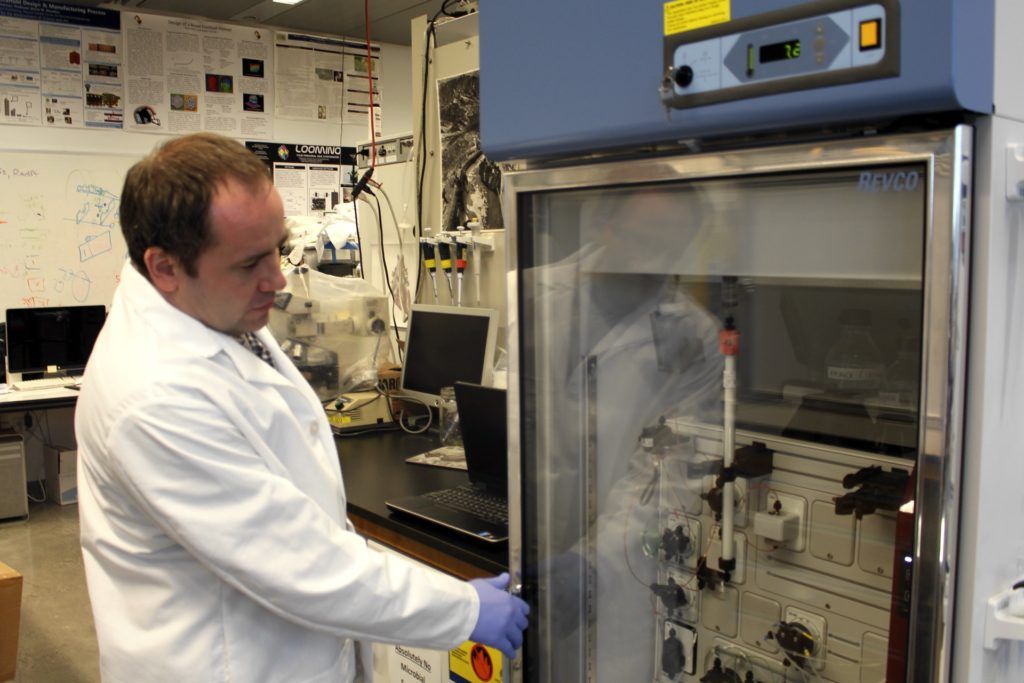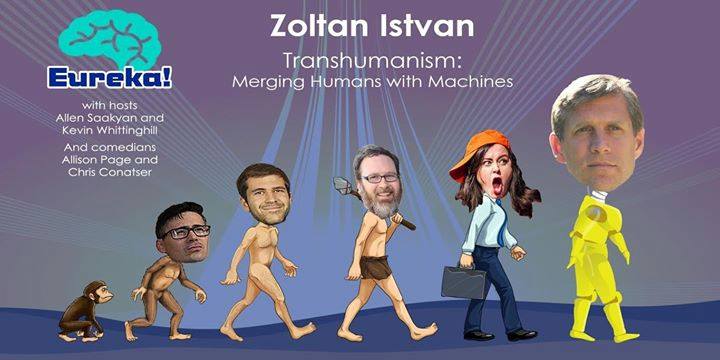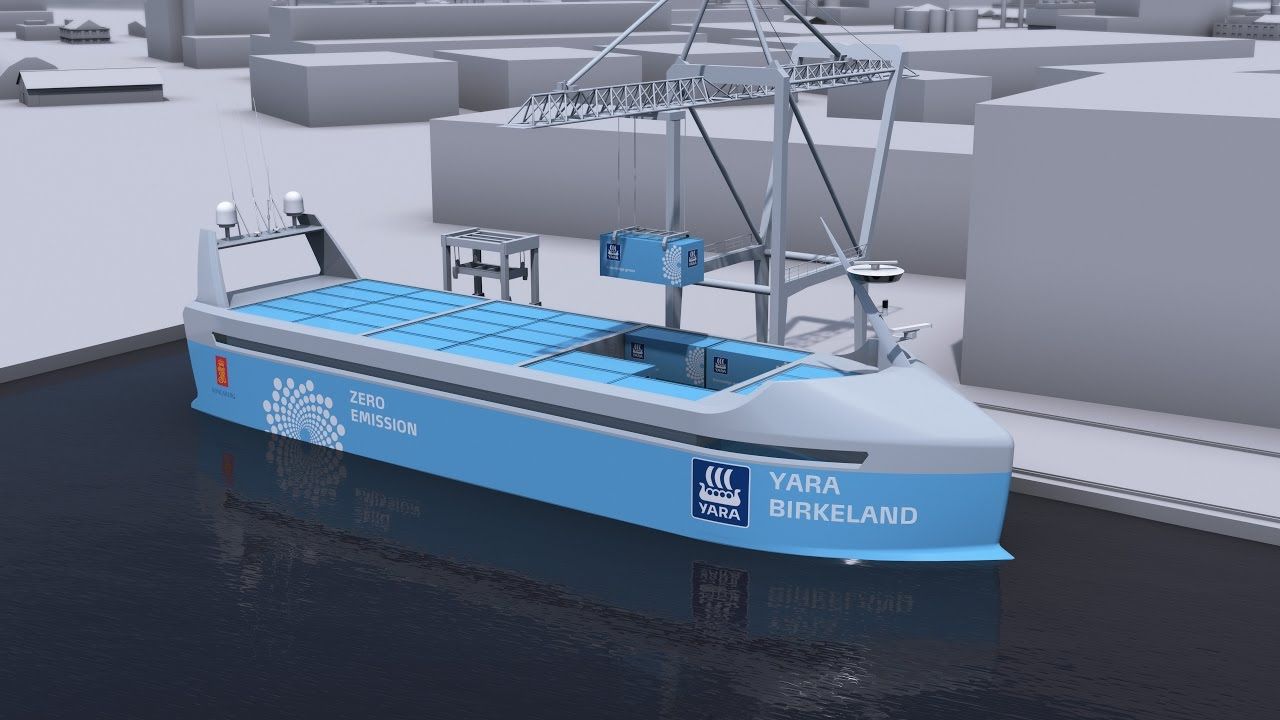The nine-year-old has no active HIV in the body after catching the infection at birth.
Submit your story for a chance to win a seat on Flight #008 and a $10,000 prize package, including a trip to Japan.
Your flight has been mysteriously transported 20 years into the future. How could this happen? Wait, that’s not important. Take a deep breath. Look around. Without a doubt, the world has changed. What new technologies and innovations have reshaped the way we live?
XPRIZE, ANA and the world’s top science fiction storytellers are embarking on a journey to 2037, envisioning a world transformed by exponential technologies and a global community of innovators. We’d like for you to join us.
With Bloon, you will travel aboard the safest space vehicle ever designed and get the planetary awareness that only astronauts have been able to experience before.
Get your flight today at: http://zero2infinity.space/bloon
Ancient volcanic deposits on the moon reveal new evidence about the lunar interior, suggesting it contains substantial amounts of water.
Using satellite data, scientists from Brown University studied lunar pyroclastic deposits, layers of rock that likely formed from large volcanic eruptions. The magma associated with these explosive events is carried to the moon’s surface from very deep within its interior, according to a study published today (July 24) in Nature Geoscience.
Previous studies have observed traces of water ice in shadowed regions at the lunar poles. However, this water is likely the result of hydrogen that comes from solar wind, according to the new study’s lead author, Ralph Milliken, a geologist at Brown University. The new research reveals there is likely a large amount of water in the moon’s mantle, as well. This suggests that the water was delivered to the moon very early in its formation, before it fully solidified, Milliken told Space.com. [Photos: The Search for Water on the Moon].
Cory Doctorow has made several careers out of thinking about the future, as a journalist and co-editor of Boing Boing, an activist with strong ties to the Creative Commons movement and the right-to-privacy movement, and an author of novels that largely revolve around the ways changing technology changes society. From his debut novel, Down And Out In The Magic Kingdom (about rival groups of Walt Disney World designers in a post-scarcity society where social currency determines personal value), to his most acclaimed, Little Brother (about a teenage gamer fighting the Department of Homeland Security), his books tend to be high-tech and high-concept, but more about how people interface with technologies that feel just a few years into the future.
But they also tend to address current social issues head-on. Doctorow’s latest novel, Walkaway, is largely about people who respond to the financial disparity between the ultra-rich and the 99 percent by walking away and building their own networked micro-societies in abandoned areas. Frightened of losing control over society, the 1 percent wages full-on war against the “walkaways,” especially after they develop a process that can digitize individual human brains, essentially uploading them to machines and making them immortal. When I talked to Doctorow about the book and the technology behind it, we started with how feasible any of this might be someday, but wound up getting deep into the questions of how to change society, whether people are fundamentally good, and the balance between fighting a surveillance state and streaming everything to protect ourselves from government overreach.
Join us Live on 28th July on our Facebook Page and lets talk some science. Dr. Oliver Medvedik hosts our monthly Journal Club and this time we are talking about a new protein destroying missle system that could target undruggable diseases developed at Dundee University, UK.
Journal Club is a monthly live event and runs thanks to the support of our patrons. You can become a patron here: https://www.lifespan.io/campaigns/join-us-become-a-lifespan-hero/
We are holding our third Journal Club live stream event on July 28th at 13:00 EST/18:00 UK. Dr. Oliver Medvedik live from Cooper Union NYC and the Ocean level Patrons will be discussing a recent research paper with the opportunity for viewers to join the chat, comment and ask questions.
The paper we will be discussing is the recent AdPROM study where researchers from Dundee University, UK, created a missile system capable of targeting and destroying proteins within the cell, this opens up the door for treating undruggable diseases and tackling some of the aging processes. We discuss the research here in an article.
Fulcher, L. J., Hutchinson, L. D., Macartney, T. J., Turnbull, C., & Sapkota, G. P. (2017). Targeting endogenous proteins for degradation through the affinity-directed protein missile system. Open Biology, 7, 170066.
Customized cancer vaccines that match the unique genetic makeup of individual tumors have just passed phase 1 trials.
Cancer is predominantly a disease of aging caused by genomic instability. Finding effective ways to prevent and treat cancer is therefore of great interest to those working in the field of aging research as well as those working in oncology.
Therapies that target combinations of neoantigens, distinctive markers on the surface of cancer cells that the immune system learns to identify, is one potential approach to treating cancer. These neoantigen combinations vary between one patient and another and this is the focus of a new study which we will talk about today[1].
Immunotherapy is an approach to cancer treatment that seeks to make the immune system better at detecting and destroying cancer. This has the advantage over traditional drugs in that there should be fewer side-effects from using the body’s own defences to fight cancer.
With the NASA GLOBE Observer app and a thermometer, citizen scientists can help collect data on how the eclipse changes atmospheric conditions near you. Find out more on how to participate: http://go.nasa.gov/2eFvxbK # Eclipse2017.
My #transhumanism work and California Gov run will be featured. Come laugh, learn, and have a good time. It starts at 7:30PM with happy hour before, which I should be at a bit too. https://www.eventbrite.com/e/eureka-tickets-35947613279
We are getting close to the point of a completely automated supply chain.
OSLO—Two Norwegian companies are taking the lead in the race to build the world’s first crewless, autonomously operated ship, an advance that could mark a turning point in seaborne trade.
Dubbed by shipping executives the “Tesla of the Seas,” the Yara Birkeland now under development is scheduled in late 2018 to start sailing fertilizer 37 miles down a fiord from a production facility to the port of Larvik. Using the Global Positioning System, radar, cameras and sensors, the electric ship is designed to navigate itself around other boat traffic and to dock on its own.
The vessel will cost $25 million, about three times as much as a conventional container ship of its size, but its backers say without need for fuel or crew it promises to cut annual operating costs by up to 90%. The 100-container ship is scheduled to be in the water toward the end of next year, though initially it will be tested with a human at the controls.








